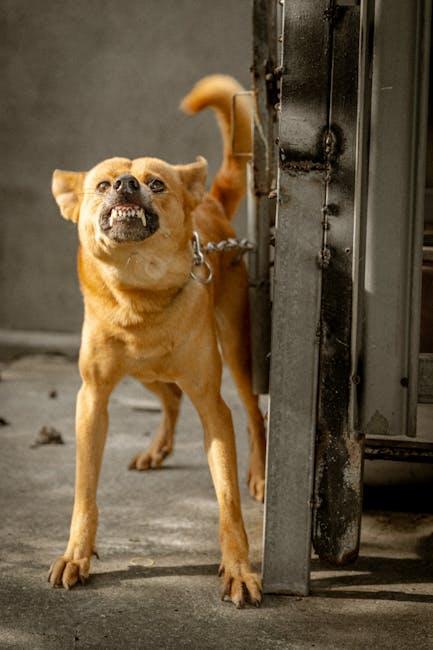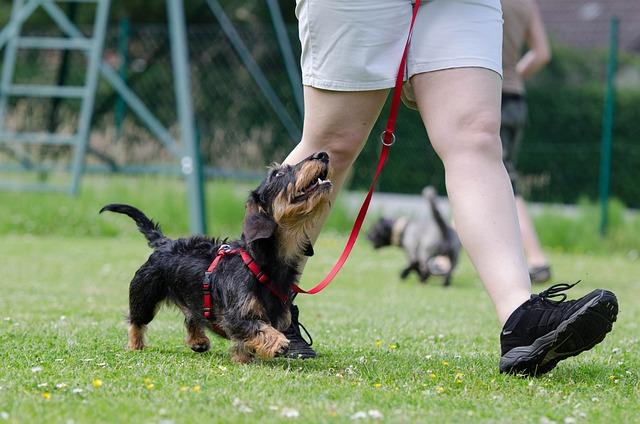Welcoming a new person into your home can be a delightful experience, but for some dogs, it can also be a source of anxiety and fear. Understanding and addressing your dog’s fear of strangers is not just about making your pet feel comfortable; it’s about fostering a safe and harmonious environment for everyone involved. This article will guide you through compassionate and effective strategies to help your furry friend overcome their apprehensions. With patience, empathy, and the right approach, you can transform your dog’s fear into confidence, ensuring that encounters with new people become positive experiences. Let’s explore the steps you can take to support your dog on this journey towards overcoming their fear of strangers.
Understanding Your Dogs Fear and Its Triggers
Understanding what scares your dog is the first step in helping them overcome their fear of strangers. Dogs can be frightened by a variety of factors, and identifying these triggers is crucial. Some common triggers include:
- Loud noises: Sudden sounds like fireworks or thunderstorms can startle dogs, causing them to associate similar noises with strangers.
- Unfamiliar scents: Dogs have a keen sense of smell, and new scents can be overwhelming or perceived as a threat.
- Body language: The way a stranger approaches your dog can be intimidating. Rapid movements or direct eye contact may be interpreted as aggression.
- Previous experiences: If a dog has had a negative encounter with a stranger in the past, they may be more prone to fear in future interactions.
Recognizing these triggers allows you to create a more controlled environment for your dog, minimizing their exposure to what frightens them. With time, patience, and understanding, you can help your furry friend feel more at ease around new people.

Creating a Safe and Calm Environment for Your Dog
Fostering a safe and calm environment is crucial in helping your furry friend feel secure when meeting new people. Start by creating a designated safe space in your home where your dog can retreat whenever they feel overwhelmed. This could be a cozy corner with their favorite blanket and toys. It’s important to maintain a calm demeanor around your dog, as they often pick up on human emotions. Encourage a peaceful atmosphere by using soft lighting and playing soothing music.
- Ensure that all family members and visitors respect your dog’s space.
- Introduce new people gradually, allowing your dog to approach at their own pace.
- Use positive reinforcement techniques, such as treats and praise, to reward calm behavior.
- Consider using calming aids, like pheromone diffusers, if your dog is particularly anxious.
Remember, patience is key. By consistently maintaining a tranquil environment, you’ll help your dog build confidence and gradually overcome their fear of strangers.

Gradual Socialization Techniques for Building Trust
Building trust in your dog towards strangers is a process that requires patience and understanding. Gradual socialization is key, allowing your furry friend to adapt at their own pace. Start by introducing them to new people in a controlled environment. Keep initial interactions brief and positive. Ensure the stranger remains calm, using a soft voice and slow movements to avoid overwhelming your dog.
- Allow your dog to approach the stranger on their own terms. Avoid forcing interactions.
- Use treats as positive reinforcement to reward your dog for calm behavior.
- Maintain a relaxed and confident demeanor, as dogs often mirror their owner’s emotions.
Consistency is crucial in helping your dog feel secure. Gradually increase the duration and frequency of these interactions, always prioritizing your dog’s comfort level. Over time, your dog will begin to associate strangers with positive experiences, reducing fear and building trust.

Positive Reinforcement and Reward-Based Training Strategies
Building your dog’s confidence around strangers begins with positive reinforcement and reward-based training strategies. These approaches emphasize encouraging desired behaviors by associating them with positive experiences. Begin by identifying a reward that your dog loves—this could be treats, toys, or praise. When introducing your dog to new people, start in a calm and controlled environment. Gradually expose your dog to strangers from a distance where they feel safe, rewarding them with their favorite treat for calm behavior.
To reinforce positive associations, consider these steps:
- Start Slow: Allow your dog to observe strangers without direct interaction. Reward any signs of calmness or curiosity.
- Keep Sessions Short: Limit exposure to new people to brief periods to prevent overwhelming your dog.
- Watch Body Language: Look for signs of stress, such as yawning or lip licking, and adjust the situation accordingly.
- Introduce Familiar Strangers: Invite friends over to practice interactions, providing treats for positive engagement.
- Consistent Praise: Always use a cheerful tone and offer praise when your dog responds positively.
Through consistent practice and positive reinforcement, your dog can gradually learn to trust and feel comfortable around new people, transforming fear into curiosity and confidence.

